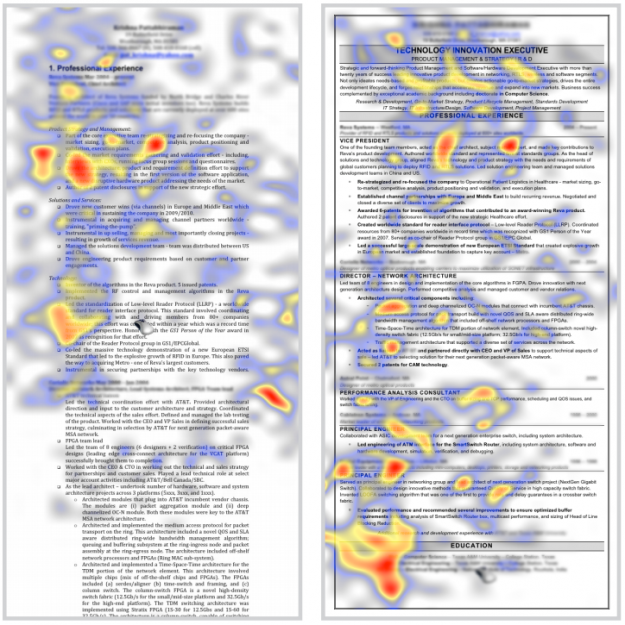How recruiters look at your resume
Apr 11, 2012 12:31 am • Permalink 
In a study by TheLadders (of n equals 30), recruiters looked at resumes and make some judgements. During evaluations, eye tracking software was employed, and they found that the recruiters spent about six seconds on a resume looking for six main things: name, current company and title, previous company and title, previous position start and end dates, current position start and end dates, and eduction. After that, it was a crapshoot.
Beyond these six data points, recruiters did little more than scan for keywords to match the open position, which amounted to a very cursory "pattern matching" activity. Because decisions were based mostly on the six pieces of data listed above, an individual resume's detail and explanatory copy became filler and had little to no impact on the initial decision making. In fact, the study's eye tracking technology shows that recruiters spent about 6 seconds on their initial "fit/no fit" decision.
If I ever have to submit a resume, I'm just going to put those six things as bullets and then the rest will all be keywords in small, light print. It'll be like job search SEO.
[via @alexlundry]

How businesses approach infographics
Apr 10, 2012 09:50 am • Permalink The Washington Post asked three "young entrepreneurs" how their company uses infographics. They responded with similar sentiments. The first one said:
Infographics can be great as part of presentations, newsletters or other research content. It keeps people's interest by lending a storytelling and visual element to what can be sterile research.
The second said:
Infographics are outstanding for bringing life to content that would otherwise be dry, uninteresting or unshareable.
And the last one, who to be fair, seems to know more than the first two, said:
At the end of the day, the main use for infographics is to create content that can potentially go viral and drive traffic, links and exposure to a Web site and the brand.
If I were new to these infographic things, my main takeaway here would be that they're used to make boring material interesting. Shouldn't it be the other way around though? Information graphics are interesting because their foundations of data and um, information are worth looking at in the first place. Don't fall into the trap of trying to make something "visually compelling" without anything to compel with.

No comments:
Post a Comment